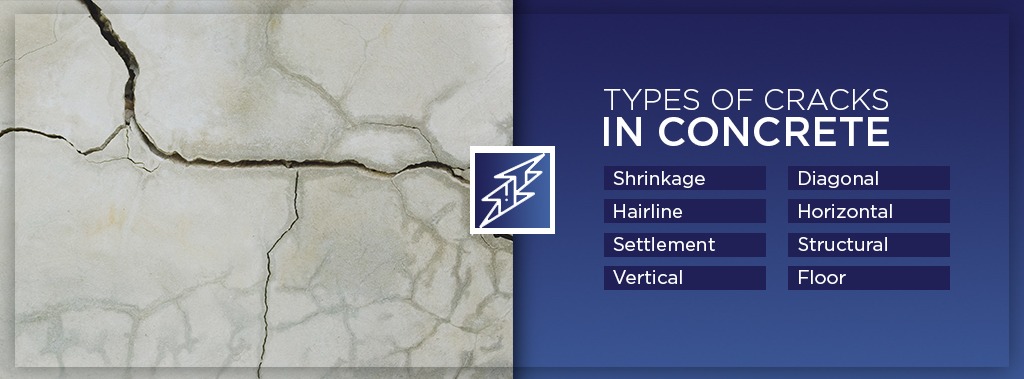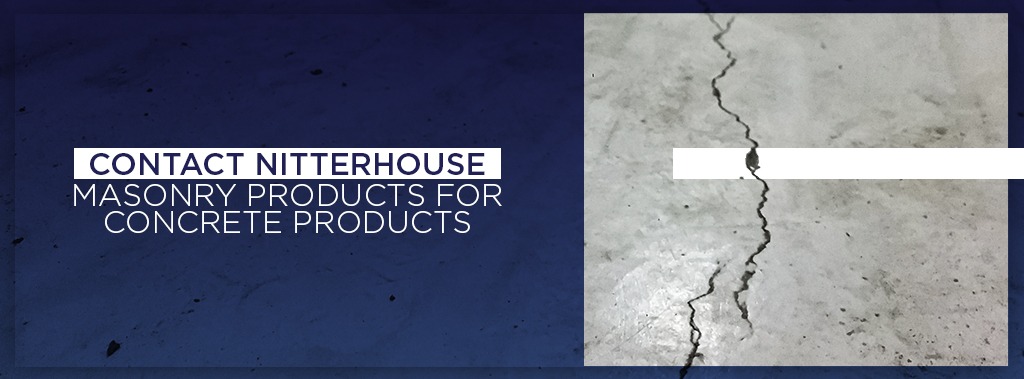
Jump-To:
- Causes of Cracks in Concrete
- Types of Cracks in Concrete
- Crack Prevention in Concrete
- Repairing Methods for Concrete Cracks
Concrete is a cost-effective, durable pavement material that’s common in commercial and residential areas. When installed correctly, it can last for several decades without breaking or splitting. However, concrete can often crack in extreme weather conditions if it doesn’t have strong support. Use this guide on how to prevent cracks in concrete to help protect your concrete, maintain your property’s curb appeal and have a sturdy foundation for your building.
Causes of Cracks in Concrete
Improper installation of a concrete pavement, driveway or patio usually leads to fractures. Here are some common reasons why the concrete may develop cracks after laying it down:
- Too much water in the mix: Concrete only needs a little water to make it strong enough, but some concrete manufacturers add too much water to the concrete during production. Even though the water makes the concrete easier to install, it also reduces its strength. As concrete hardens and dries, it shrinks due to the evaporation of excess water in the mix. The shrinkage creates forces that will eventually pull the slab apart and cause cracking.
- Too little drying time:While too much water can cause cracks, too little water can damage the concrete. The curing process can take weeks, so the concrete needs enough water to prevent the slab from drying too quickly and cracking. The chemical reaction that causes the concrete to turn from a liquid to a solid requires water, but if there’s not enough water, it’ll dry more quickly than it should.
- Improper strength: Concrete is available in different strengths, but the contractor may have chosen the wrong strength for your project. You need to hire a reliable contractor or designer who knows what they’re doing to make sure your concrete is the right application for your business or home.
- Poor subgrade preparation:The subgrade is the native soil underneath a constructed slab. During installation, the subgrade should be level and clear of debris. Without this support, the concrete can settle and crack.
- Improper contraction joints: Plastic or hardboard joints help control the natural movement under concrete to prevent splitting. For these joints to work against cracking, your contractor needs to install them at the right place and depth.
Types of Cracks in Concrete
Some fractures are harmful to the structural integrity of your building, but others are easy to fix. If you notice cracks in your concrete slab, look for these types and find out what they could signal:
- Shrinkage: These fractures are the result of the water drying too quickly in the curing process. The evaporation and shrinking of the slab can occur because of the air temperature, concrete temperature, relative humidity and wind speed.
- Hairline: You may notice a thin crack on your concrete if there was hot weather while the concrete was curing. Even though it’s narrow, a hairline crack may extend through the whole slab.
- Settlement:Even after the installation process has completed, concrete will continue to move into place. During this time, reinforcing steel or a previous concrete placement should be restraining the concrete. Once the surface underneath the concrete can no longer support its weight, the concrete will begin to move out of place and lose its structural integrity.
- Vertical: You’ll usually find more than one vertical crack at a time due to shrinkage or temperature changes. This type of fracture is not as dangerous as one caused by settlement.
- Diagonal: A diagonal crack that’s almost the full height of the foundation wall is most likely the effect of settlement problems, expansive clay soil or frost damage. If the fracture is more extensive at the bottom, there may be a problem with the material under the concrete.
- Horizontal: Lines in the middle of a concrete wall are probably the result of issues with the load above it. If the crack is high up on the wall, it could also be from frost damage.
- Structural:Horizontal loading or settlement usually causes fractures in the foundation of homes or buildings. If there’s too much pressure from water or heavy equipment around the wall of the foundation, you may find horizontal cracks a few feet from the top of the wall.
- Floor: Cracks on the base of a concrete slab are relatively common, but you should repair them as soon as you notice them to prevent water and insect damage. Floor cracks are usually the result of water pressure, so you should redirect water away from the fracture before trying to fix it.
Crack Prevention in Concrete
The way you create and install concrete materials can prevent most cracks from forming. Find a reliable contractor to install your concrete in a way that avoids cracks in your concrete wall, patio, driveway or deck. Here are some other tips to keep your concrete from cracking later:
- Properly cure: Concrete can take almost a month to dry and settle entirely. Make sure there are no cracks in the surface by spraying the concrete a few times a day for the first week, applying even more water in warmer, drier weather.
- Add control joints:Cut weak spots into the slab to anticipate and redirect any potential cracks through control joints. If you create them correctly, the cracks should occur in these vulnerable areas instead of in a substantial part of the slab.
- Mix the proper amount of water: During the construction process, find out the allowable water for the concrete mix by checking the instructions on the bag or consulting the manufacturer. You can tell you added enough water if the concrete mix is smooth. If it’s crumbly, add more water until you incorporate all the dry bits. If it’s too wet, add more dry concrete.
- Compact the base: Before you pour the concrete, you need to support the new slab. The base under the concrete needs to be compact or it could settle and create a void.
- Add steel reinforcement: Metal installed under the concrete can increase the strength of your foundation. Add wire mesh beneath the concrete before pouring so you can have sturdy support for your slab.
Repairing Methods for Concrete Cracks
Fix the cracks in your concrete slab before they become a more significant issue. Existing fractures could allow water to seep in and freeze, which would further damage the concrete. To fill in the cracks, undercut the sides and fill them with a concrete patching compound. If you have a narrow fracture in your concrete, use a caulking gun to fill it.
Follow these steps for repairing more extensive concrete cracks:
- Widen the base of the split with a masonry chisel and hammer, removing any loose material from the old concrete.
- Use a wire brush or a garden hose to get rid of the debris from the crack.
- Clear away pools of water inside the fracture with a vacuum or a brush.
- Follow the manufacturer’s instructions to create the concrete patching compound.
- Fill the deep areas of the split with the compound.
- Use a trowel to smooth the surface and feather the mixture into the surrounding concrete.
- Texture the surface with a dry paintbrush.
- Let the compound cure according to the manufacturer’s instructions.
Contact Nitterhouse Masonry Products for Concrete Products
If you want to prevent cracks in your concrete products, make sure you have them installed correctly and invest in the best products for your application. At Nitterhouse Masonry Products, we specialize in high-quality, durable concrete that we’ve crafted to endure harsh weather conditions and extreme temperatures. For more information about how we make our concrete, contact us online or call us at 717-267-4500.




